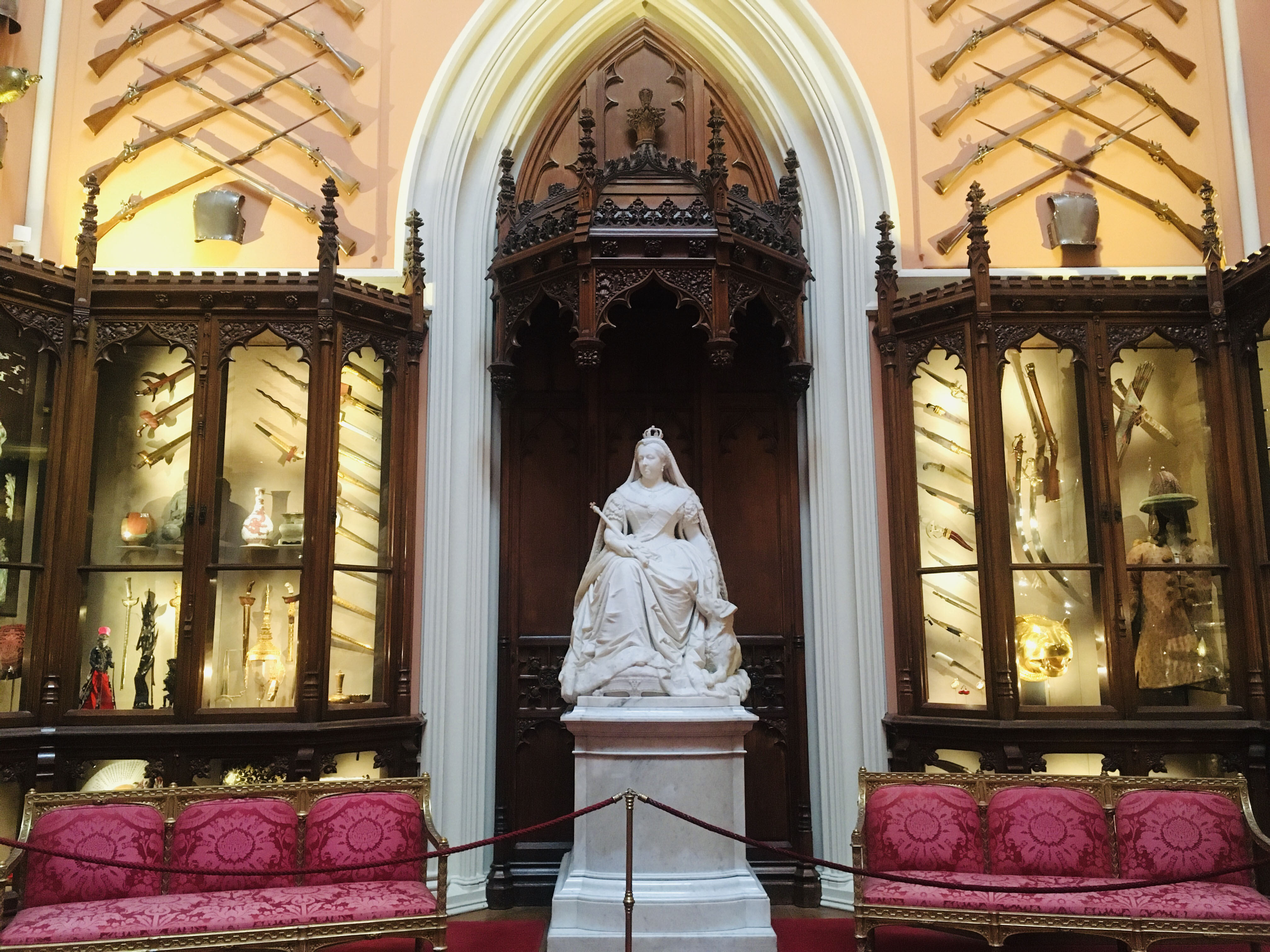
Grand Vestibule: The British Monarchy and the World
The Grand Vestibule at Windsor Castle reflects interaction between the monarchy and the wider world
Dhal (shield)
1800-75RCIN 11278
Like the weapons and other articles presented to Albert Edward Prince of Wales during his four-month tour of India in 1875-76, this is a particularly elaborate and rich example of a traditional form. Shields of this type, or dhal, were usually made of hide, often painted or lacquered, with metal bosses applied at the points to which the handles were fastened on the reverse. In this instance the front of the shield is made of silver gilt, enamelled in blue, green and yellow, mounted with four bosses and inset with seven tear-shaped ornaments and a crescent motif, all of them set with diamonds. This impressive shield is inlaid with more than 800 diamonds.
The colours employed for the enamelling, and the subject matter - numerous animals and birds, some of which are attacking one another - are characteristic of Lucknow work of the eighteenth and nineteenth centuries. The four jewelled borders around the edges are formed on segmental plates about 20 centimetres long, whose joins are disguised in ingenious ways. The thickness of the shield is probably filled with lac, and the reverse is a plain lacquered brass disc.







